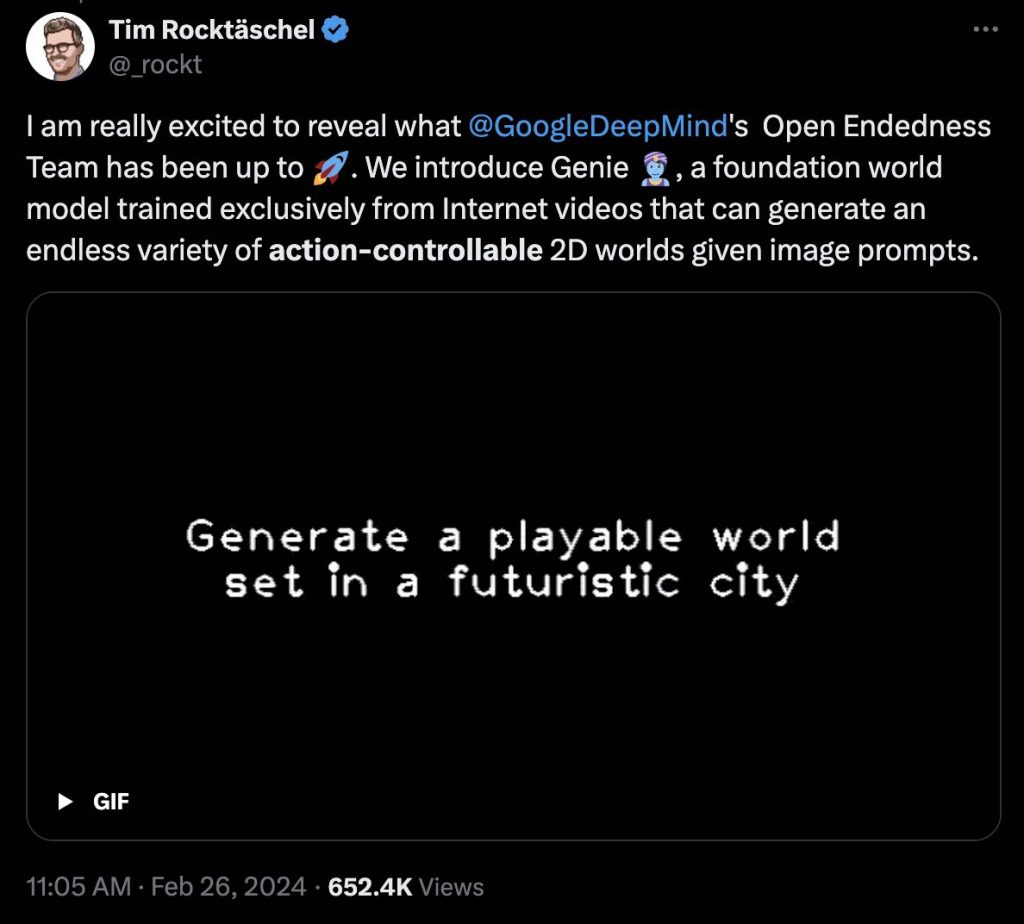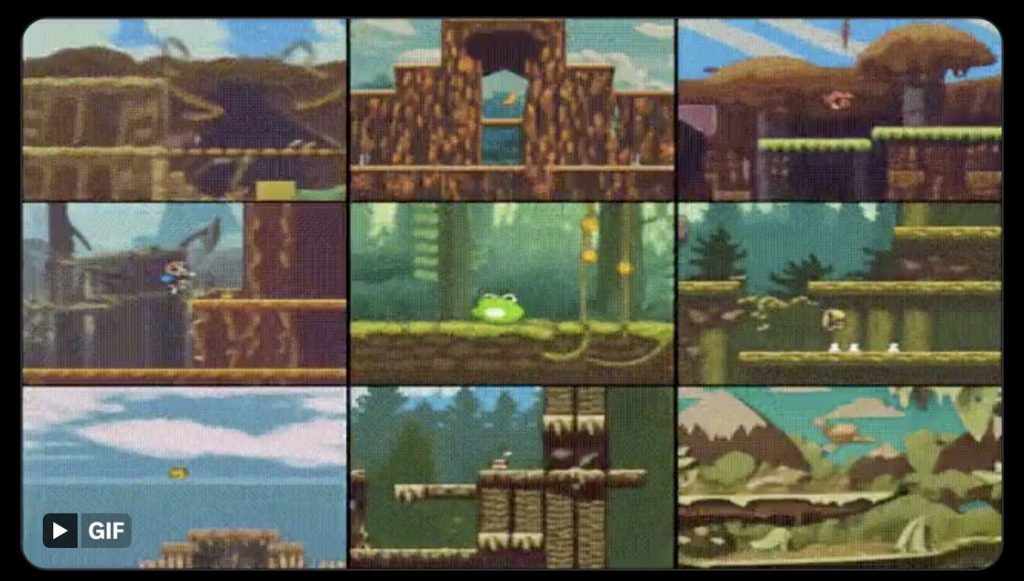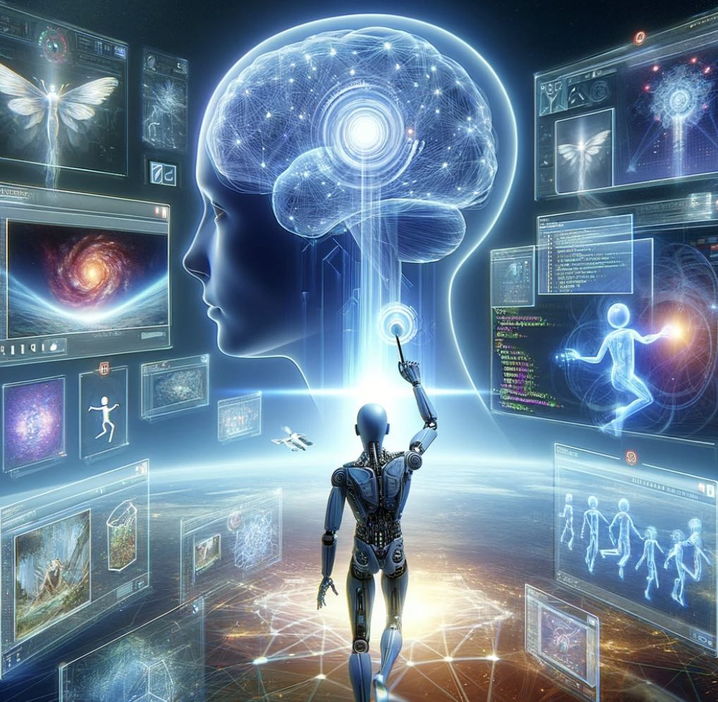In an era where artificial intelligence (AI) continues to break new ground, developers have achieved another remarkable feat. Specialists from Google DeepMind have introduced a relatively compact model, boasting 11 billion parameters, that has learned to interpret the rules of two-dimensional platformer video games by analyzing 200,000 hours of gameplay footage. This feat is accomplished without any data on the control inputs used by players. Yet, what truly captures the imagination is the model’s ability to transform static images into fully interactive video games. Dubbed “Genie,” this innovation represents a leap forward in the convergence of AI and creative content generation.
Unveiling Genie: The AI That Breathes Life into Images

Genie’s capability to turn a single photo, sketch, or AI-generated illustration into a two-dimensional video game is nothing short of revolutionary. This process not only generates the game’s graphics but also crafts a basic interactive environment, all in a singular, seamless step. The potential applications of this technology extend far beyond simple novelty, heralding a new era of content creation that could redefine the entertainment industry as we know it.
The Current State of Play: A Proof of Concept

While the games created by Genie might not impress the discerning eye due to their low resolution and frame rate, it’s crucial to recognize the project’s experimental nature. This initial iteration serves as a proof of concept, demonstrating the potential of AI in generating playable content from static images. With further refinement, including access to higher quality video footage and enhanced computing power, the output of such AI models is poised to see significant improvements in clarity, smoothness, and overall quality.
Beyond Gaming: A Trend with Far-Reaching Implications

The significance of Genie lies not in the model itself but in the broader trend it represents. The integration of AI models capable of converting text to image, image to video, and now, image to playable content, signals a transformative shift in content creation. As highlighted by New Atlas, the implications of this technology could be vast, impacting not just the video game industry but entertainment at large. From high-level visual effects and interactive virtual worlds to personalized musical scores, the potential for AI to enrich and customize our entertainment experiences is boundless.
Conclusion: The Future of AI-Driven Creativity
As we stand on the brink of this new frontier in AI-driven content creation, it’s clear that projects like Genie are just the beginning. The ability to transform static images into dynamic, interactive experiences opens up a world of possibilities for creators and consumers alike. As AI continues to evolve, we can anticipate a future where the lines between creator and creation blur, giving rise to an era of entertainment that is more immersive, personalized, and engaging than ever before. For those of us keenly observing these developments, the journey into AI’s potential to revolutionize content creation is just getting started.
The current version of Genie was trained on video footage with very low resolution and frame rate, which affects the clarity and smoothness of the games it generates. This limitation is primarily due to the experimental nature of the project and the quality of the input data.
Beyond gaming, Genie’s underlying technology could impact various entertainment sectors by enabling the automatic creation of interactive virtual worlds, high-level visual effects, and personalized musical accompaniments, among other applications.
Challenges include improving the model’s understanding of complex game mechanics, enhancing the quality of generated games, and ensuring that the AI-generated content is engaging and enjoyable for players. Additionally, addressing ethical considerations and copyright issues related to user-generated content is crucial.

